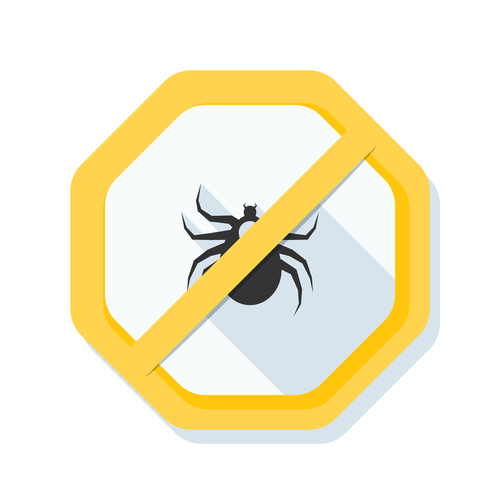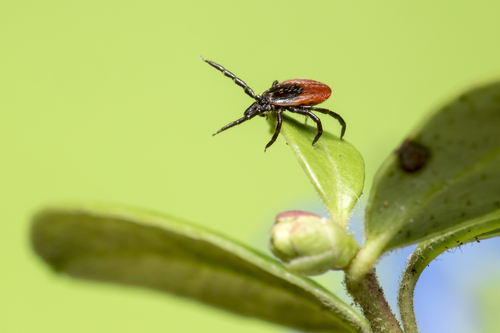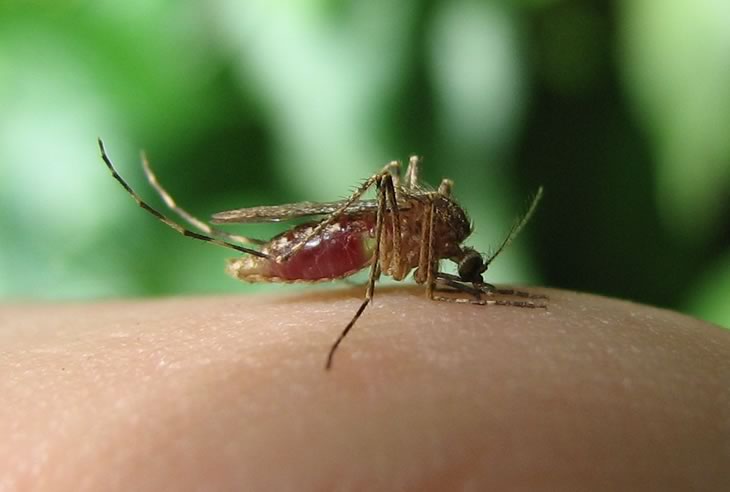As the most commonly reported tick-borne disease in the United States, Lyme disease has been getting a lion’s share of the attention lately. But ticks — the U.S. has almost 100 varieties but only a few bite humans — can be hosts to nearly a dozen other diseases that can be passed on to you and your children when they latch onto your skin.
Ticks – the reason to wear shoes, socks and long pants before heading out to enjoy nature, whether on a hike in the woods or playing in a grassy field.
Question: How do I keep a tick from biting me?
Answer: That’s the best way to prevent catching any disease that a tick might carry.
1. Avoid brush-filled, grassy areas on the outskirts of fields and woods.
2. Cover up, especially the ankles, feet and legs that ticks find first on their travels around your body.
3. Use insect repellents that ward off ticks and mosquitoes even if you consider them messy
4. Check yourself and your pets for ticks after you’ve been outdoors. This is perhaps the most important tip. Ticks can take up to 24 hours or more to find a feeding spot and latch on, so you’ve got a little time.
Q. What should I do if I find a tick on my dog?
A. It’s probably a brown dog tick, which can be found across the continental USA, or an American dog tick. They’re pretty hard to tell apart though brown dog ticks can cause a nasty home infestation because they prefer indoors.
Be wary of both because each can transmit diseases to humans.
To remove a tick that has latched onto your dog, put a little rubbing alcohol on the area and pluck the tick out with tweezers.
Be sure to remove the biting head as well as the entire body, save it in a sealed container, then take it and your pet to the veterinarian.
If you end up with a brown dog tick infestation in your home, you’ll have to get pretty aggressive to oust the suckers. That includes treating and washing all of your dog’s favorite spots, vacuuming cracks along baseboards and throwing the vacuum bag in your sealed trash can outside.
Prevention here is best, too. Protect your dog now with tick repellent. Many brands, both oral and topical, work for both fleas and ticks and need to be taken or applied once a month.
Q. What’s the best way to remove a tick from a person?
A. Don’t use a match. Just like you would with your dog, grab a pair of tweezers and slowly pull out the tick at a right angle from your skin. You want to get the tweezers as close to your skin as possible and remove the entire tick.
If you have to use your fingers, at least put a tissue or other barrier between your hand and the tick.
Disinfect the area and wash your hands afterward. Go to the doctor if you start to develop symptoms in the weeks following the bite.
Q. 12 reasons to take ticks seriously? What diseases can they carry?
A. Lyme disease infects about 300,000 Americans each year, according to an estimate from the federal Centers for Disease Control and Prevention. Fourteen states in the Northeast and Midwest account for more than 96% of cases, but the range of ticks that transmit that disease has been increasing.
Federal epidemiologists also have identified 11 other tick-borne diseases that you and your family can catch:
• Anaplasmosis, caused by bacteria, can be fatal in about 1% of cases, even in previously healthy people.
• Babesiosis is caused by microscopic parasites that infect red blood cells and is treatable. The tick that transmits it is about the size of a poppy seed.
• Colorado tick fever is a viral infection transmitted from the bite of an infected Rocky Mountain wood tick, which lives in the western United States and Canada in areas 4,000 to 10,000 feet above sea level. This disease has no treatment.
• Ehrlichiosis, caused by bacteria, appears with flu-like symptoms. It is treatable has been fatal in about 2% of cases.
• Powassan disease, which comes from a virus, has no specific treatment for the virus. Although only 75 cases have been reported in the past decade, it can develop into encephalitis, an inflammation of the brain, or meningitis, an inflammation of the membranes around the brain and spinal cord.
• Q fever comes from a bacteria that naturally infects some animals such as goats, sheep and cattle, so ticks that feed on an infected animal can transmit the disease. Only about half the people who get Q fever will have symptoms, but those people can develop pneumonia or hepatitis.
• Rocky Mountain spotted fever, caused by bacteria, can be transmitted via at least two types of dog ticks and Rocky Mountain wood ticks. The disease can be severe or even fatal if not treated within the first few days of symptoms that include headache, fever and often but not always a pink, non-itchy rash that starts on wrists, arms and ankles.
• Southern tick-associated rash illness has an unknown cause, but researchers know that lone star ticks transmit this disease that can act like Lyme disease but isn’t caused by Lyme’s bacteria. An antibiotic can treat the symptoms.
• Tick-borne relapsing fever, a bacterial infection, also can be transmitted via lice. The rare infection is usually linked to sleeping in rustic rodent-infested cabins in mountainous areas, but if not treated victims can face several cycles of three days of 103-degree fevers, headaches and muscle aches and a week without.
• Tick paralysis, thought to be caused by a toxin in tick saliva, is rare but can paralyze a victim and is often confused with Guillain-Barre syndrome or botulism. Luckily, within 24 hours of removing the tick, the paralysis typically subsides.
• Tularemia first infects rabbits and rodents, and the ticks that bite them infect humans. One telltale sign of infection is often, but not always, an ulcer on the skin where the bacteria entered the body; lymph nodes also become infected.
Q. How do I know if I’ve got a tick-borne disease?
A. It depends. Many of the diseases that ticks carry start out with fever, headache and fatigue in people.
Some, like Lyme disease and Rocky Mountain spotted fever, come with rashes — but not in every case.
If you know you’ve been in areas that ticks like and you experience symptoms, don’t brush those symptoms off. Some people with Lyme disease or other tick-borne infections never find the tick that bit them.
Many of the bacterial diseases can be stopped in their tracks with antibiotics. But curing a disease might not fix some of the associated problems — such as arthritis that often accompanies Lyme disease — that can develop after an initial illness.
Michelle Case of Loveland, Colo., needed two dozen doctors and rounds and rounds of medical testing before she was diagnosed with chronic Lyme disease. She has no idea how she encountered the disease, especially because the disease is rare in Colorado.
Yet symptoms of heart palpitations, muscle tremors, chronic fatigue, memory loss and blurred vision had plagued her for two years without a diagnosis, and the problems still come and go.
“Am I just going to keep coming in and out of remission for the rest of my life? I don’t know,” she said. “Every day is a struggle.”
© Gannett Co., Inc. 2017. All Rights Reserved





